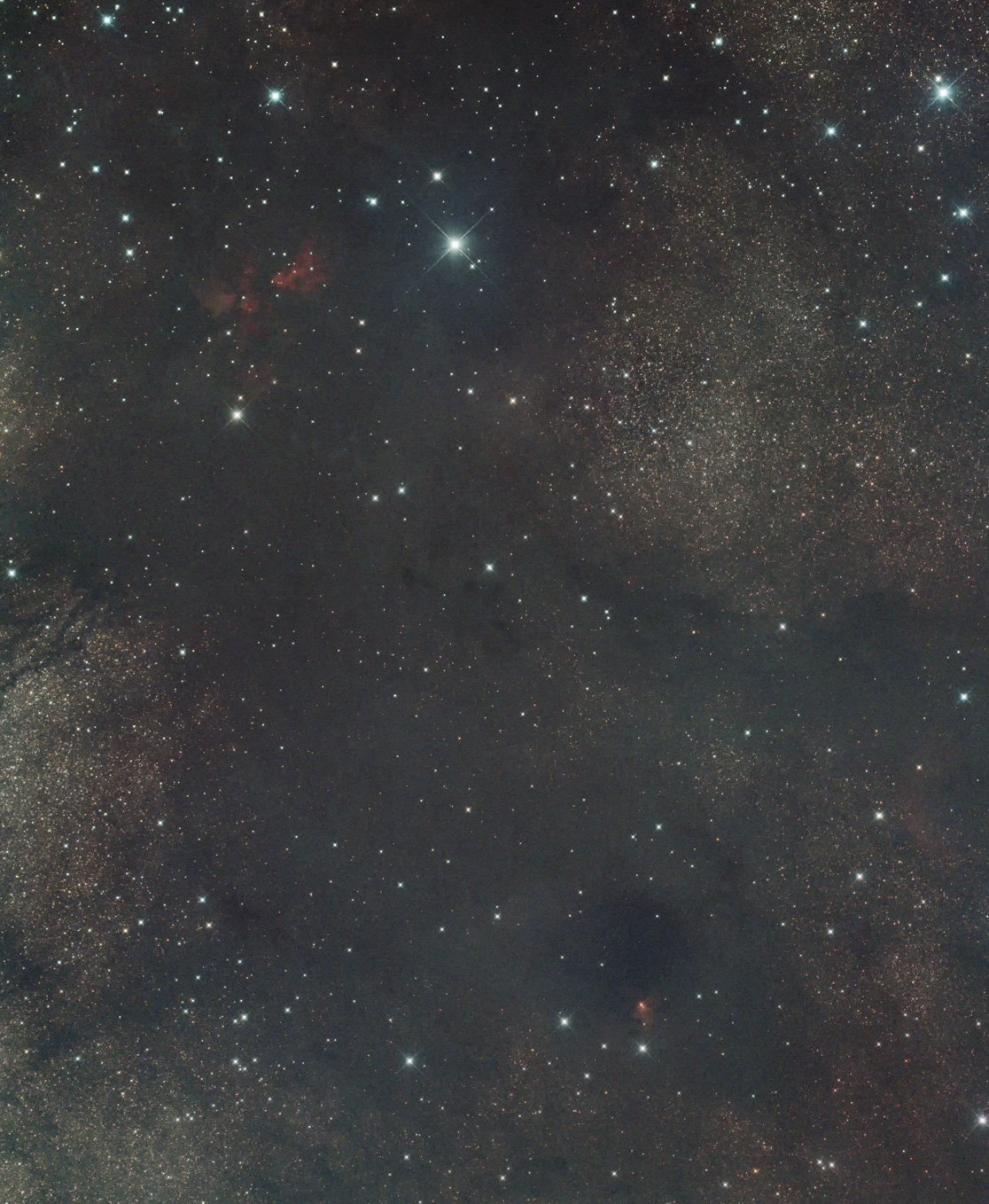| Date & Time: | May 3 2024, from 24:17 to 26:13 JST(+0900) |
| Mosaic of 2 flames of 8min.×8shots |
| Optical: | TAKAHASHI 16cm(6.3") epsilon (f=530mm, F3.3) |
| with LPS-D1 Light-pollution suppression filter |
| Auto-guided with TAKAHASHI JP Equatorial & SBIG STV |
| CMOS Camera: | ZWO ASI2600MC Pro (Cooled temp.: -20°C) |
| Location: | Ooizumi, Hokuto city, Yamanashi pref. |
| Sh2-62 / Diffused Nebula, type 4 E |
|---|
| R.A. | 18h 27m 35.6s (2000.0) |
|---|
| Dec. | -03°51' 05" (2000.0) |
|---|
| Apparent Size | 3.0' |
|---|
| Real Size | 0.74 light yrs. |
|---|
| Magnitude | - |
|---|
| Distance | 850 light yrs. |
|---|
| Other IDs | LBN 85 |
|---|
|
| Sh2-64 / Diffused Nebula, type 2 E |
|---|
| R.A. | 18h 31m 32.8s (2000.0) |
|---|
| Dec. | -02°05' 29" (2000.0) |
|---|
| Apparent Size | 20.0×8.0' |
|---|
| Real Size | 8.2×3.3 light yrs. |
|---|
| Magnitude | - |
|---|
| Distance | 1420 light yrs. |
|---|
| Other IDs | LBN 90, RCW 174 |
|---|
|
This captures an area about 2 degrees east of eta Serpentis Cauda.
Although unnumbered dark nebulae mostly drift across much of the field, two red Hα nebulae are visible.
First, visible in the upper left corner of the image is Sh2-64. It spans about 20 by 8 arc minutes and is estimated to be 1,420 light-years away from the solar system.
Though quite faint and not particularly famous, it is considered one of the closest star-forming regions to the solar system.
Then, in the lower right corner of the screen, a small nebula Sh2-62 is visible.
Just north of it lies a circular dark nebula, partly obscuring this nebula.
It measures approximately 3 arc minutes in size and is located 850 light-years away.
|

